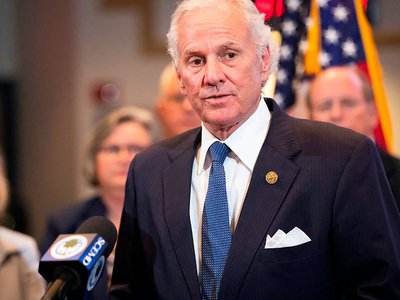At a recent confab, President Biden’s imperiled party pushed a new message: Democrats deliver.
The proposed slogan was panned; Democrats were terrified Republicans would respond with: “Yes! Democrats deliver crushing inflation, soaring crime, an open border, critical race theory for tots, full-term abortions on demand, a woke military, high taxes and out-of-control spending. And now… will Joe Biden’s Democrats deliver a recession?”
Yes, just when you thought things could not get worse, along comes the very real possibility of a downturn, thanks to Bidenomics, the war in Ukraine and an inept Federal Reserve. A year ago, during a robust recovery, such a forecast would have seemed ludicrous.
A top Wall Street economist recently conducted an informal poll of his firm’s clients. To his surprise, 100 percent thought the U.S. would be in a recession by next year.
Why such gloom? It starts with accelerating inflation, caused by out-of-control government spending and measures taken by the Biden White House that kept workers on the sidelines. Inflation is also being fueled by soaring energy prices, thanks to lower U.S. production amid reviving growth and now the disruption to Russian oil exports.
The past four recessions have been preceded by sharp hikes in energy prices; $120 oil is a red flag.
To combat spiraling prices, the Federal Reserve must begin raising rates aggressively, which will slow growth. Investors hope the central bank will manage a “soft landing”; history tells us the odds are low, and especially for today’s Fed, which has been behind the curve for months.
Combined with sinking optimism, down stock markets and declining real incomes, the stage is set for a slump.
After initially dismissing spiraling inflation over the past year, and then blaming supply chain snafus and greedy corporations, the White House is now saying Russian President Vladimir Putin is responsible. Unfortunately for Biden, most voters disagree.
In the latest Wall Street Journal poll, 63 percent disapproved of Biden’s handling of inflation. Moreover, by a wide margin, respondents chose Republicans over Democrats as better able to handle rising prices.
Voters know that Democrats’ signature government spend-a-thons have driven 40-year-high inflation, which surged from 1.4 percent in January when Biden took office to 5.4 percent in June and last month to 7.9 percent. Biden signed into law the $1.9 trillion American Rescue Plan (ARP) just three months after Congress passed a $900 billion package; it brought total COVID-related spending to $5.7 trillion, more than was spent fighting World War II.
“The risk is not doing enough”, Biden told reporters at the time. Actually, it turned out the risk was doing too much.
Biden says the ARP was necessary to “rescue” the economy, but that is not true. The U.S. was growing at over 6 percent the quarter that Biden took office; the ARP exploded already-strong demand and led to shortages and, inevitably, rising prices. Simply stated, it created too much money chasing too few goods.
It also included myriad benefits that allowed workers to stay home, worsening a deepening labor shortage and kicking off what has become a wage-price spiral.
Astonishingly, even now, with voters saying inflation is their number one issue, Democrats (and some Republicans) still see no reason to slow the gusher of federal funds.
Consider the recent $1.5 trillion omnibus spending bill passed by Congress last week after no hearings, no discussion and with only hours available for legislators to review the more than 2,700-page package. As reported in the Wall Street Journal, the bill was chock-full of earmarks like a $3 million museum in Houston celebrating the life of Mahatma Gandhi and $1.6 million for the development of “equitable growth of shellfish aquaculture.”
Small potatoes, maybe, but in the aggregate costly beyond measure.
Soaring energy costs are also clearly a major factor in the recent inflation surge. Biden is blaming Putin, but voters know that of the $1.75 hike in gasoline prices, fully $1 predated the war in Ukraine. One dollar per gallon, which is robbing Americans of $400 million every single day.
Oil markets were tight even before the war, mainly because OPEC has limited production increases and because U.S. output fell almost 2 million barrels per day from late 2019 to early 2021 as COVID cut demand. As people began to travel and demand recovered, American oil companies have been slow to ramp up production, given the hostility of the Biden White House towards U.S. fossil fuels, a posture the White House has stubbornly maintained even as gas prices reach record levels.
Meanwhile, Americans are becoming more pessimistic.
The University of Michigan’s Consumer Sentiment Index sank to the lowest level in 11 years in February, worse than expected. Respondents were especially gloomy about the future and about price increases, projecting inflation one year out of 5.4 percent, the highest such forecast since 1981.
Considering the robust jobs market, the dismal reading is surprising. But real wages are down 2.6 percent over the past year; people know when they’re falling behind.
Recession in 2023 is not yet the consensus, to be sure. After all, the economy is still motoring ahead, driven by a 40 percent increase in the money supply over the past two years, rising (nominal) wages and a near record-low inventory to sales ratio, which means that even with rising uncertainty, many businesses will continue to invest in restocking goods.
But the odds of Biden’s recession are rising fast. What more will Democrats deliver?






